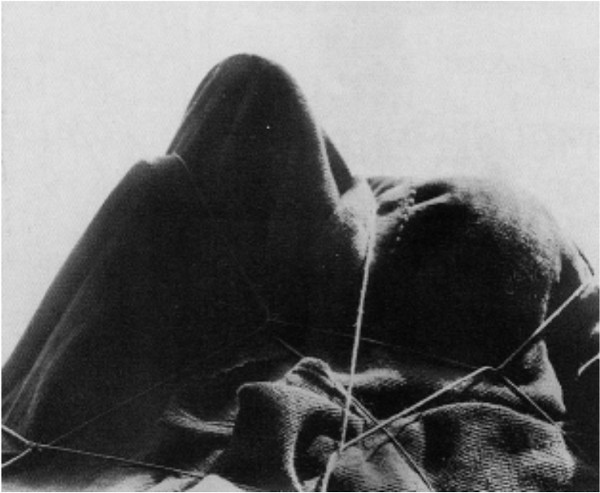Dorothy Stein: Ada: A Life and a Legacy (1987)
Filed under book | Tags: · biography, computing, electricity, history of computing, history of science, mathematics, science, technology

In this engrossing biography, Dorothy Stein strips away the many layers of myth surrounding Ada Lovelace’s reputation as the inventor of the science of computer programming to reveal a story far more dramatic and fascinating than previous accounts have indicated. Working with original sources, Stein clears up a number of puzzles and misinterpretations of Ada’s life and activities.
Augusta Ada Byron, Countess of Lovelace, was the only daughter of the poet Lord Byron and the close friend and associate of a number of the foremost scientific, literary, and artistic figures of the early Victorian period. She enjoys a growing reputation today for her report on Charles Babbage’s Analytical Engine—considered to be the first computer. Yet Stein shows how the often self-serving Babbage conspired to create the legend, using the Countess to promote his projects and make exaggerated claims for his engine. By placing Lady Lovelace’s report in the social and cultural context in which it was written, she finds that, far from being a clear and masterly exposition of the structure and logic of the computer, it was a rather mystical tract that dwelt on the inventor’s outdated philosophy of mathematics, and his mechanistic view of theology and the workings of capitalist economics.
Ada’s own life is vividly told, often in her own words, as Stein weaves into her narrative excerpts from letters, memoirs, and little-known documents to create an account that is at once black comedy, detective story, psychological drama, and scientific explanation. She examines the barriers and opportunities that Ada faced as she strove to develop her ambitions and search for truths that would free her of that shadow of her mysterious father and her overbearing and manipulative mother.
Stein reveals a turbulent and complex woman who tries to run away, who marries and bears three children, attempts to bury herself in the study of mathematics, and to find herself in a career in music or in writing. Ada corresponds and associates with men as diverse as Dickens, Chadwick, Quetelet, and Wheatstone. She sickens and attempts to find the cause of her malady by exploring the fringes of several sciences. Her interest in the use of electricity to treat nervous disorders involves her in the controversies over mesmerism and phrenology, and turns her from Babbage to Faraday and to Andrew Crosse, the “electrician” whose work served as the model for Frankenstein. With Ada, Stein examines the roots of the fear, fascination, and mystic awe with which we still regard the impact of high technology upon ordinary life.
Publisher MIT Press, 1987
History of Computing Series
ISBN 0262691167, 9780262691161
321 pages
Steven Shapin: The Scientific Life: A Moral History of a Late Modern Vocation (2008)
Filed under book | Tags: · big science, entrepreneurship, history of science, science, silicon valley, technoscience

“Who are scientists? What kind of people are they? What capacities and virtues are thought to stand behind their considerable authority? They are experts—indeed, highly respected experts—authorized to describe and interpret the natural world and widely trusted to help transform knowledge into power and profit. But are they morally different from other people? The Scientific Life is historian Steven Shapin’s story about who scientists are, who we think they are, and why our sensibilities about such things matter.
Conventional wisdom has long held that scientists are neither better nor worse than anyone else, that personal virtue does not necessarily accompany technical expertise, and that scientific practice is profoundly impersonal. Shapin, however, here shows how the uncertainties attending scientific research make the virtues of individual researchers intrinsic to scientific work. From the early twentieth-century origins of corporate research laboratories to the high-flying scientific entrepreneurship of the present, Shapin argues that the radical uncertainties of much contemporary science have made personal virtues more central to its practice than ever before, and he also reveals how radically novel aspects of late modern science have unexpectedly deep historical roots. His elegantly conceived history of the scientific career and character ultimately encourages us to reconsider the very nature of the technical and moral worlds in which we now live.
Building on the insights of Shapin’s last three influential books, featuring an utterly fascinating cast of characters, and brimming with bold and original claims, The Scientific Life is essential reading for anyone wanting to reflect on late modern American culture and how it has been shaped.”
Publisher University of Chicago Press, 2008
ISBN 0226750248, 9780226750248
468 pages
Reviews: Barbara Herrnstein Smith (London Review of Books), Theodore M. Porter (American Scientist), Michael Cournoyea (Spontaneous Generations).
PDF (updated on 2013-5-21)
Comment (0)The Shape of Experiment (2006)
Filed under proceedings | Tags: · art, art history, experiment, experimental art, history of science, history of technology, science, technology

What is the result of recent studies on the history of experiment? How has our image of science been changed since Ian Hacking’s statement, “experimentation has a life of its own,” turned into a catch phrase for investigations into the history of science? What is the lesson to be drawn from the studies following Steven Shapin’s and Simon Schaffer’s Leviathan and the Air Pump (1985) and Peter Galison’s How Experiments End (1987)?
In trying to answer these questions, this conference did not aim at contributing to a more developed philosophy of scientific experimentation, nor did it try to return to the grand narratives on the history of science. Rather, the goal of this conference was to identify characteristic configurations within in the history of experimentalization from 1800 to the present. The guiding question was: what are the typical forms of experiment that emerged in the separated and shared history of science, technology, and the arts?
Conference: The Shape of Experiment, Berlin, 2-5 June 2005
Publisher Max-Planck-Institute for the History of Science, Berlin
Preprint series, No. 318
235 pages
conference (prepared by Julia Kursell, Sven Dierig, and Henning Schmidgen)
publisher

